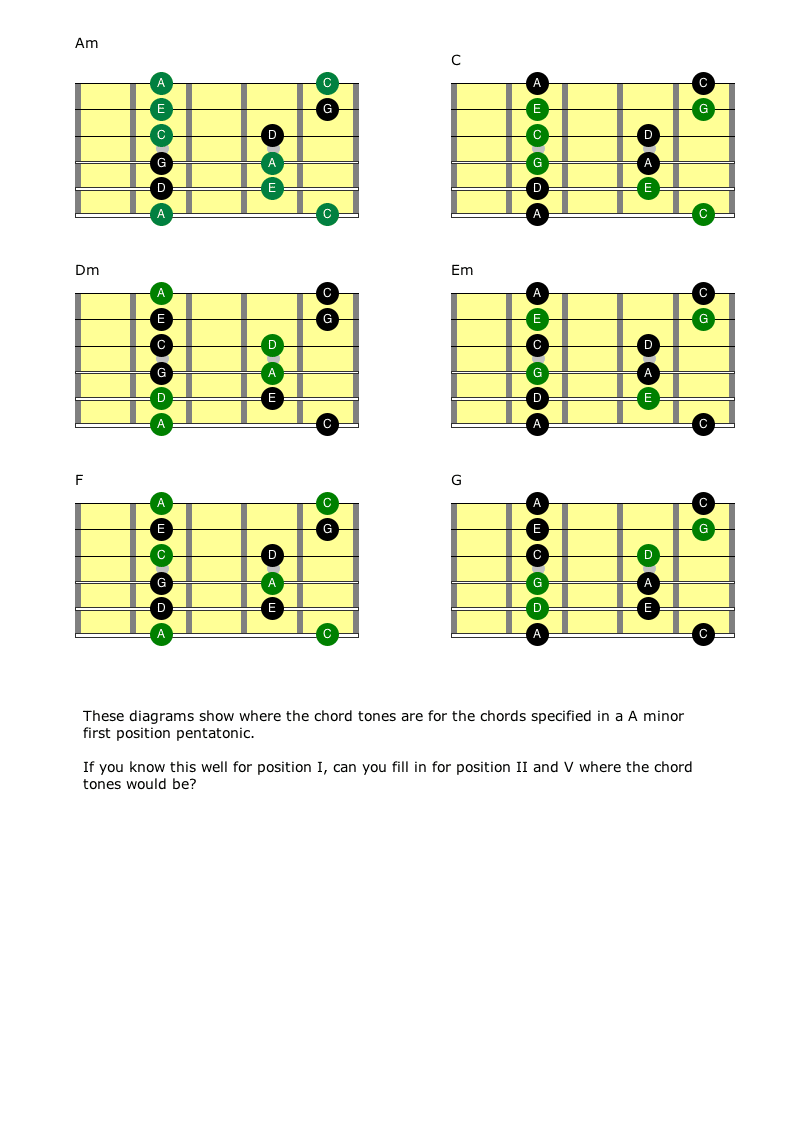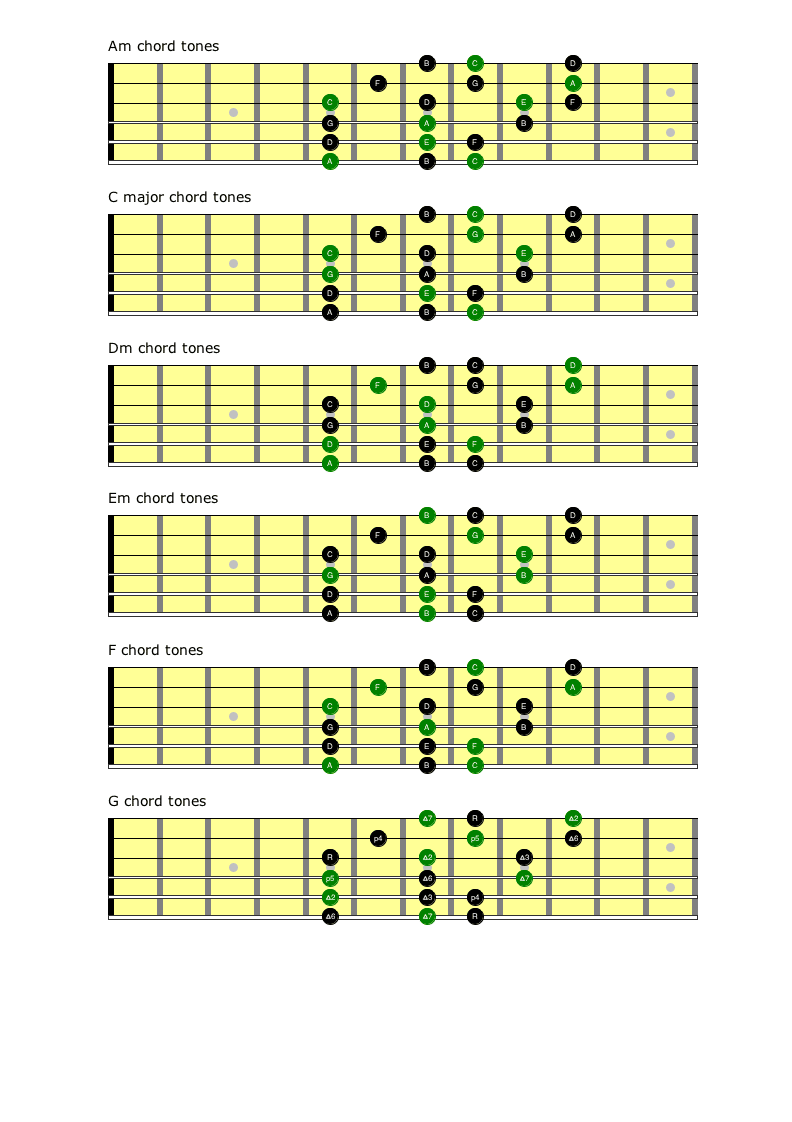How To Train Your Ability To Use Chord Tones In Ways That Sound Great
You are now familiar with the idea that if you play a tone from a chord while that chord is sounding, you will get a consonant sound = the chord and the note will sound like they fit well together.
In general, when it’s left to random chance whether notes fit against the chord or are dissonant, it sound ok, but it doesn’t sound that great. Dissonance is very effective and it’s not that we don’t want dissonance, but we want it where we decide it’s going to go. Played with conviction, dissonant notes can sound very dramatic.
The benefits to you of getting good at this are numerous – your ear will get used to what each chord tone sounds like agains the chord, you’ll be better able to identify those sounds in your head that you want to play, you’ll be able to deliberately create different musical effects, and you’ll also get better at transcribing.
The challenges of playing consonant notes of over a chord include:
-
you have to know what the notes are for each chord
-
You have to know where those notes are on the fretboard
-
You have to keep track of the chords as they change.
This can be daunting! But it’s easy if you go through these steps with each of the pairs of chords listed.
-
Just play one chord tone for each bar. Hear how it fits, and see how it’s very manageable if you give yourself plenty of time. You can also compare how it sounds when you deliberately play a non-chord tone.
-
Play two chord tones for each bar.
-
Play between one and four chord tones for each bar. By now, if you’ve carried out step 1 and 2, you’ll be getting used to where the chord tones for the pair of chords are.
-
Play one small phrase, ideally two to four notes, per chord. The LAST note will be a chord tone. Observe what the feeling is musically when you end on a chord tone.
-
Play one phrase over two chords. Start on a chord tone from chord 1, end on a chord tone from chord 2. Then start on any note from the scale, but end on a chord tone from chord 2.
If you haven’t done this before, start out with the pentatonic shapes as you will already be familiar with the pattern, and you will be able to find the target notes quite quickly. When this is easy, you can also use the three note per string versions. Once you get good at this, you can set yourself different layers of challenge – e.g. starting on a scale sequence and ending on a chord tone; vice versa, sliding UP to chord tone, sliding DOWN to a chord tone, etc.
Carry out these steps with each of the chord pairs listed: NB – you can also use these audios to practice transitioning between arpeggios.
Am-G
Am-C
Am-Dm
Am-Em
Am-F

